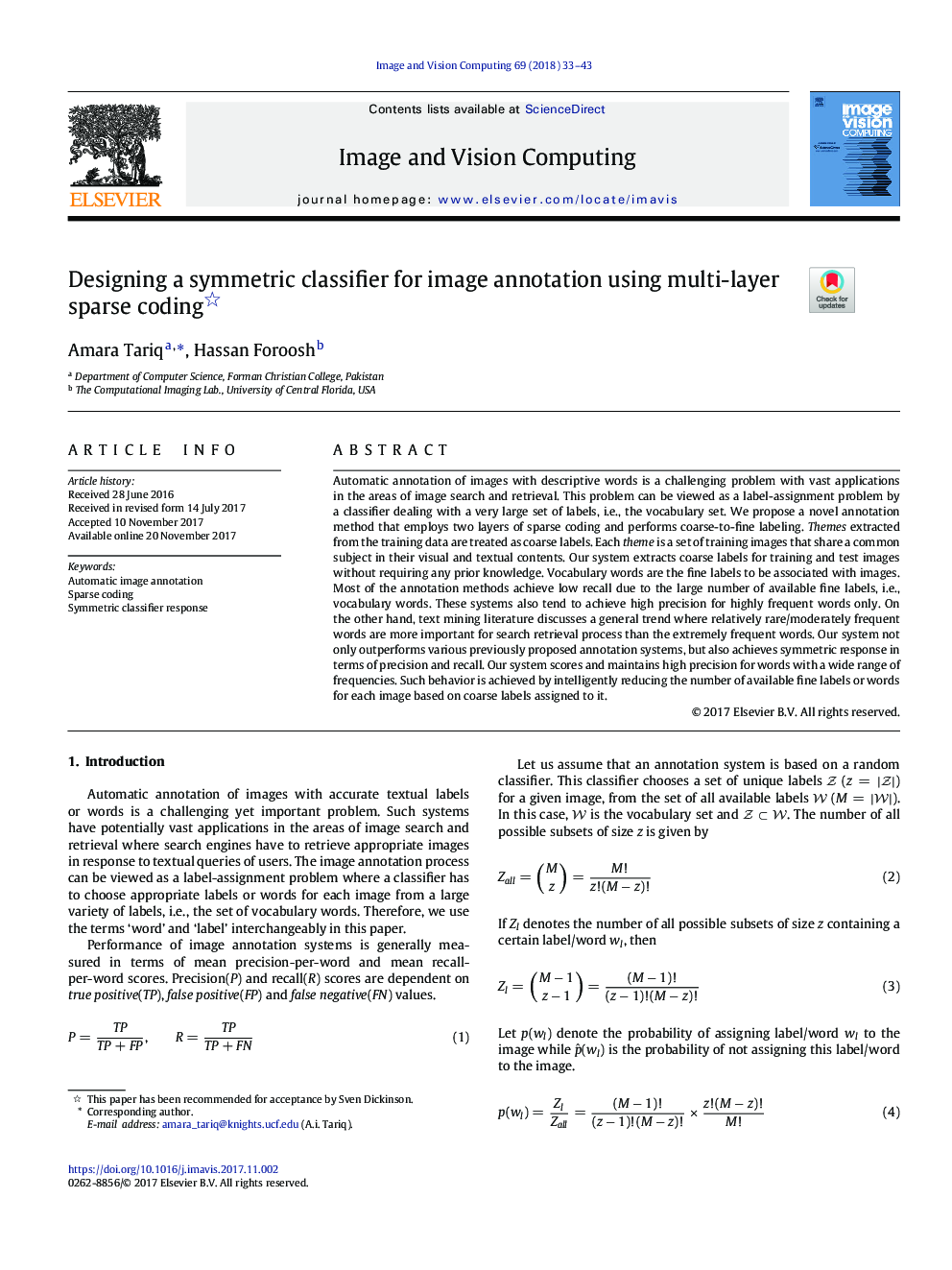| Article ID | Journal | Published Year | Pages | File Type |
|---|---|---|---|---|
| 6937753 | Image and Vision Computing | 2018 | 11 Pages |
Abstract
Automatic annotation of images with descriptive words is a challenging problem with vast applications in the areas of image search and retrieval. This problem can be viewed as a label-assignment problem by a classifier dealing with a very large set of labels, i.e., the vocabulary set. We propose a novel annotation method that employs two layers of sparse coding and performs coarse-to-fine labeling. Themes extracted from the training data are treated as coarse labels. Each theme is a set of training images that share a common subject in their visual and textual contents. Our system extracts coarse labels for training and test images without requiring any prior knowledge. Vocabulary words are the fine labels to be associated with images. Most of the annotation methods achieve low recall due to the large number of available fine labels, i.e., vocabulary words. These systems also tend to achieve high precision for highly frequent words only. On the other hand, text mining literature discusses a general trend where relatively rare/moderately frequent words are more important for search retrieval process than the extremely frequent words. Our system not only outperforms various previously proposed annotation systems, but also achieves symmetric response in terms of precision and recall. Our system scores and maintains high precision for words with a wide range of frequencies. Such behavior is achieved by intelligently reducing the number of available fine labels or words for each image based on coarse labels assigned to it.
Related Topics
Physical Sciences and Engineering
Computer Science
Computer Vision and Pattern Recognition
Authors
Amara Tariq, Hassan Foroosh,
